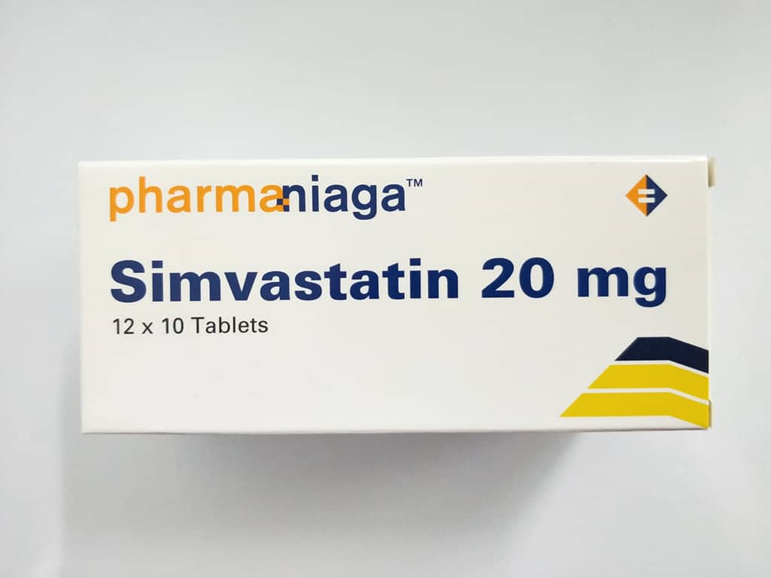A nurse is teaching a client who has a new prescription for simvastatin. Which of the following instructions should the nurse include?
You should take the medication in the morning.
You should avoid grapefruit juice.
You should monitor for ringing in the ears.
You should expect brown-colored urine.
The Correct Answer is B
Choice A reason: Taking the medication in the morning is not the correct instruction. Simvastatin is a statin drug that lowers cholesterol levels by inhibiting the enzyme that produces cholesterol in the liver. The liver produces more cholesterol at night, so simvastatin is more effective when taken in the evening or at bedtime.
Choice B reason: Avoiding grapefruit juice is the correct instruction. Grapefruit juice can increase the blood levels of simvastatin and cause serious side effects such as muscle damage, liver damage, and kidney failure. Grapefruit juice inhibits the enzyme that metabolizes simvastatin in the intestine, leading to higher concentrations of the drug in the bloodstream.

Choice C reason: Monitoring for ringing in the ears is not the correct instruction. Ringing in the ears, or tinnitus, is not a common or serious side effect of simvastatin. However, some other medications that lower cholesterol, such as niacin and gemfibrozil, can cause tinnitus. The client should report any unusual or persistent symptoms to the prescriber.
Choice D reason: Expecting brown-colored urine is not the correct instruction. Brown-colored urine, or hematuria, is not a normal or expected side effect of simvastatin. However, it may indicate a serious condition such as rhabdomyolysis, which is a rare but life-threatening complication of statin therapy. Rhabdomyolysis is the breakdown of muscle tissue that releases a protein called myoglobin into the bloodstream. Myoglobin can damage the kidneys and cause brown-colored urine. The client should seek immediate medical attention if they notice any signs of rhabdomyolysis, such as muscle pain, weakness, fever, or dark urine.
Nursing Test Bank
Naxlex Comprehensive Predictor Exams
Related Questions
Correct Answer is B
Explanation
Choice A - Catheter Occlusion: This occurs when the catheter is blocked, preventing the flow of fluids or medication. It is usually indicated by difficulty in flushing the catheter or a slow drip rate¹. However, it does not typically cause a gurgling sound.
Choice B - (Catheter migration) is correct because when a central venous catheter (CVC) migrates from its original position, the tip can enter a smaller vein or a different location where turbulence occurs. This may cause the client to hear a gurgling or bubbling sound, especially during infusion or with position changes. Migration can happen due to coughing, movement, or changes in pressure, and it doesn’t necessarily involve the catheter being visibly out of place
Choice C - (Catheter dislodgment) is incorrect because dislodgment typically refers to the catheter being partially pulled out of the insertion site. This would be more likely to cause external signs like visible catheter movement or fluid leakage at the insertion site, rather than internal gurgling sounds. Gurgling is more associated with internal changes in catheter position, as seen with migration.
Choice D - Catheter Rupture: This is a break or tear in the catheter. It can cause serious complications, including infection and embolism. However, a gurgling sound is not a typical symptom of a catheter rupture¹.
Correct Answer is A
Explanation
The Correct answer is A.
Choice A reason: Evaluating the client for nausea, vomiting, and anorexia is important because these are common signs of digoxin toxicity. Digoxin is a cardiac glycoside used to treat heart failure and certain arrhythmias, but it has a narrow therapeutic window. Toxicity can occur due to various factors, including renal insufficiency or drug interactions. Monitoring gastrointestinal symptoms like nausea, vomiting, and loss of appetite can help detect toxicity early.
Choice B reason: Withholding digoxin if the heart rate is above 100/min is not typically recommended. Digoxin has a negative chronotropic effect, meaning it can decrease heart rate. However, the decision to withhold medication usually depends on a heart rate that is too low (bradycardia), not high. The normal range for resting heart rate in adults is 60-100 beats per minute. Therefore, withholding digoxin for a heart rate above 100/min without other clinical justifications would not be appropriate.
Choice C reason: Measuring the apical pulse rate for 30 seconds before administration is not the standard practice. The apical pulse should be measured for a full minute to ensure accuracy, especially in clients with heart failure who are receiving digoxin. This is because digoxin can cause arrhythmias, and a shorter measurement period may not provide a true representation of the heart's rhythm.
Choice D reason: Instructing the client to eat foods that are low in potassium is incorrect. Clients taking digoxin should maintain a normal potassium level, as hypokalemia can increase the risk of digoxin toxicity. The normal serum potassium level is 3.5-5.0 mEq/L. Foods high in potassium can help maintain this balance and should not be avoided unless there is a specific clinical indication, such as hyperkalemia.
Whether you are a student looking to ace your exams or a practicing nurse seeking to enhance your expertise , our nursing education contents will empower you with the confidence and competence to make a difference in the lives of patients and become a respected leader in the healthcare field.
Visit Naxlex, invest in your future and unlock endless possibilities with our unparalleled nursing education contents today
Report Wrong Answer on the Current Question
Do you disagree with the answer? If yes, what is your expected answer? Explain.
Kindly be descriptive with the issue you are facing.
